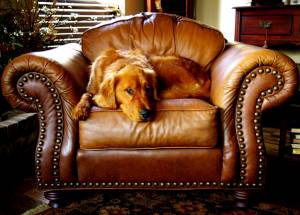
Understanding Normal Panting
Dogs pant to regulate their body temperature. Unlike humans, dogs don’t sweat through their skin. Instead, they release heat by panting, allowing moisture to evaporate from their tongues and the lining of their lungs. This process helps them cool down when they are hot or after physical activity. It’s a natural and necessary mechanism for them, especially in warm weather or during exercise.
Stress and Anxiety
Just like us, dogs can experience stress and anxiety. When they feel anxious, scared, or stressed, they may pant excessively. This could happen in response to loud noises, unfamiliar environments, separation from their owners, or even during visits to the veterinarian. If you notice your dog panting in situations that seem to cause stress, it’s important to provide them with comfort and reassurance.
Health Issues
Excessive panting can also be a sign of an underlying health problem. Dogs may pant excessively due to pain, respiratory issues, heart problems, or even certain diseases. If your dog’s panting seems out of the ordinary, it’s crucial to have them examined by a veterinarian. They can perform a thorough evaluation to determine if there are any underlying health concerns that need to be addressed.
Overheating
During hot weather, dogs are at risk of overheating, especially if they are subjected to high temperatures without adequate access to shade and water. Overheating can lead to heatstroke, a serious and potentially life-threatening condition. If your dog is panting excessively, especially in hot weather, it’s important to ensure they have a cool, shaded area to rest in, plenty of fresh water, and to avoid strenuous activity during the hottest parts of the day.
Exercise and Physical Exertion
Dogs who are engaging in physical activity may pant heavily, and this is normal. However, if your dog seems to be panting excessively during normal daily activities or after only mild exercise, it may be a sign of an underlying issue. Monitoring their activity levels and ensuring they have access to water and rest is important. If you notice any concerning changes in their panting patterns, it’s best to consult with a veterinarian.
Medication and Illness
Certain medications can cause increased panting in dogs as a side effect. Additionally, illnesses such as Cushing’s disease or respiratory infections can lead to excessive panting. If your dog is on medication or has been diagnosed with an illness, it’s essential to discuss any changes in their panting with your veterinarian to ensure it’s not a cause for concern.
Helping Your Dog
If you’re concerned about your dog’s panting, the best course of action is to consult with a veterinarian. They can help determine if there are any underlying health issues contributing to the excessive panting and provide appropriate treatment. In the meantime, you can help your dog stay comfortable by ensuring they have access to water, a cool environment, and emotional support.
In conclusion, while panting is a natural behavior in dogs, excessive or abnormal panting can indicate a range of issues from stress and overheating to underlying health problems. Being attentive to your dog’s panting patterns and seeking veterinary guidance when needed will help ensure your furry companion stays healthy and happy.






